Key Takeaways
1. The moral circle is expanding to include farmed animals
Humanity has already seen many similar transitions. With animals, we shifted from whale oil to petroleum to light our homes. We shifted from horse-drawn carriages to automobiles as the dominant mode of local transportation.
Scientific consensus. The scientific community now widely accepts that animals are conscious, feeling beings capable of suffering. This represents a major shift from the Cartesian view of animals as unfeeling machines. Key evidence includes neurological similarities between humans and other animals, as well as observed behaviors indicating emotions and cognition.
Cultural shifts. Public attitudes are changing, with growing concern for animal welfare. A 2015 Gallup poll found that 32% of Americans believe animals deserve the same rights as people. All 50 US states now have felony animal cruelty laws. This expanding moral circle builds on previous expansions like the abolition of slavery and women's suffrage.
- Historical precedents: Shifts away from whale oil, horse transportation
- Scientific evidence: Animal consciousness, emotions, cognition
- Cultural indicators: Polls on animal rights, animal cruelty laws
- Context: Part of broader trend of expanding moral consideration
2. Undercover investigations expose factory farming cruelty
Mercy For Animals has relentlessly pursued effectiveness, placing the desire to maximize its impact above all else.
Powerful exposés. Undercover investigations by animal advocacy groups have been crucial in revealing the reality of factory farming to the public. Videos and reports showing extreme confinement, abuse, and unsanitary conditions have generated widespread outrage and calls for reform.
Media impact. These investigations frequently receive major media coverage, bringing factory farming practices to mainstream attention. This has helped shift public opinion and create pressure for change. However, the industry has fought back with "ag-gag" laws trying to criminalize undercover investigations.
- Key players: PETA, Mercy For Animals, Humane Society
- Tactics: Covert filming, whistleblowing, media campaigns
- Industry response: "Ag-gag" laws to prevent investigations
- Outcomes: Increased awareness, pressure for reforms
3. Plant-based and cultured meat are revolutionizing food
The ace in the hole for the inevitability of the end of animal farming is the incredible inefficiency of making meat, dairy, and eggs from animals.
Rapid innovation. Companies like Impossible Foods and Beyond Meat are creating plant-based meat alternatives that closely mimic the taste and texture of animal meat. Meanwhile, cultured meat grown from animal cells in bioreactors is progressing toward commercial viability.
Market disruption. These new food technologies aim to be more efficient, sustainable, and ethical than conventional animal agriculture. Major food companies and meat producers are investing in and developing their own plant-based and cultured meat products, signaling a shift in the industry.
- Key players: Impossible Foods, Beyond Meat, Memphis Meats
- Technologies: Plant protein isolates, heme, cell culture
- Advantages: Efficiency, sustainability, animal welfare
- Industry response: Investment, acquisitions, new product lines
4. Corporate campaigns drive welfare reforms
Corporate victories establish precedent for more than just the movement and industry. They signal to media, intellectuals, and the public that farmed animals matter and that farmed animal advocates are a powerful force, worthy of press coverage and serious consideration.
Effective strategy. Targeted campaigns pressuring food companies to adopt higher animal welfare standards have achieved significant victories. These include pledges to switch to cage-free eggs and policies banning cruel practices like tail docking of dairy cows.
Ripple effects. Corporate policy changes affect millions of animals and create momentum for industrywide shifts. They also legitimize animal welfare as a serious business concern and set new norms. However, some argue these incremental reforms don't go far enough and may make consumers complacent.
- Tactics: Petitions, protests, shareholder resolutions
- Key victories: Cage-free egg commitments, gestation crate bans
- Pros: Large-scale impact, shifting industry norms
- Cons: Potentially inadequate reforms, risk of complacency
5. Focus on institutional change over individual diet
If revolutionaries want to overthrow a dictator, it's not enough for the majority of individuals to want the dictator gone. They need to know that other people want this result as well.
Collective action. The movement should shift focus from individual diet change to institutional and policy change. This approach can create larger-scale impacts and overcome the limitations of relying solely on personal consumer choices.
Systemic solutions. Institutional strategies like corporate campaigns, policy advocacy, and technological development can drive widespread change more effectively than convincing individuals one by one. This also helps create "common knowledge" that others support the cause.
- Individual focus: "Go vegan" messaging, lifestyle changes
- Institutional focus: Corporate campaigns, policy advocacy, food tech
- Benefits: Larger-scale impact, overcoming social barriers
- Examples: Cage-free campaigns, cultured meat development
6. Address the "Four N's" justifications for eating meat
What do people typically say when we ask them why they eat meat? Psychologists categorize people's reasons into the four N's: meat is normal, necessary, nice, and natural.
Common justifications. People often defend eating meat using the "Four N's": that it's Normal, Natural, Necessary, and Nice (tasty). Advocates need strategies to effectively counter each of these rationalizations.
Counter-arguments. Emphasize that what's normal and natural isn't always ethical, provide evidence that meat isn't necessary for health, and showcase delicious plant-based alternatives. The "natural" argument is particularly persistent and requires nuanced responses.
- Normal: Show growing popularity of plant-based diets
- Natural: Explain appeal to nature fallacy, point out modern farming
- Necessary: Cite nutritional evidence, vegan athletes
- Nice: Highlight tasty alternatives, conduct blind taste tests
7. Broaden the movement's appeal across demographics
People who see vegetarianism and animal-free food advocacy as outside their demographic are probably more hesitant to change their diet or join the movement.
Diverse representation. The movement needs to broaden its appeal beyond stereotypes of white, liberal, wealthy vegans. This requires diverse representation in leadership and messaging, as well as tailoring approaches to different cultural contexts.
Global strategy. While the US and Europe have been movement centers, the largest numbers of farmed animals are in China and India. Effective advocacy requires understanding local cultures, collaborating with local groups, and adapting strategies accordingly.
- Stereotypes to overcome: White, liberal, wealthy, Western
- Key regions: US, EU, China, India
- Tactics: Diverse leadership, culturally-adapted messaging
- Considerations: Local customs, religious practices, economic factors
8. Cautiously confront and use moral outrage strategically
We should be bold and radical by honestly explaining the huge scale and horror of animal farming, but we should also be considerate and accepting of our audience.
Balanced approach. While confrontational tactics can spark moral outrage and media attention, they risk alienating potential supporters. A more effective strategy balances bold messaging with considerate, solution-oriented approaches.
Strategic outrage. Moral outrage can be a powerful motivator, but should be used carefully. Focus on directing outrage at institutions and practices rather than individuals. Combine it with positive visions and achievable solutions to channel emotion into constructive action.
- Pros of confrontation: Attention, moral urgency
- Cons of confrontation: Alienation, defensiveness
- Better approach: Bold message + considerate tone
- Outrage targets: Factory farming, not individual consumers
9. Consider wild animals and artificial sentience in future
Are we who have opened our eyes to the harms of animal farming still ignorant of other classes of victims, perhaps who suffer in even greater numbers?
Expanding considerations. As the movement succeeds in reducing farmed animal suffering, advocates should consider expanding their moral circle further. This could include addressing wild animal suffering and the potential sentience of artificial beings.
Long-term thinking. While these issues may seem speculative, their potential scale is enormous. Considering them now can help shape a more ethical long-term future. This reflects the effective altruism approach of tackling neglected but potentially high-impact causes.
- Wild animals: Vast numbers, natural suffering
- Artificial sentience: Future AI, digital minds
- Challenges: Tractability, public acceptance
- Approach: Research, raise awareness, prepare strategies
10. The end of animal farming is achievable this century
I would guess that by 2100 all forms of animal farming will seem outdated and barbaric.
Realistic timeline. While challenges remain, the end of animal farming is a achievable goal within this century. Technological advances, shifting public attitudes, and economic factors are all trending in this direction.
Transition phases. The shift will likely occur in stages, starting with increased adoption of plant-based foods, followed by cultured meat reaching price parity, and eventually, the phasing out of conventional animal agriculture. Policy changes and cultural shifts will accelerate this process.
- Near-term (10-30 years): Plant-based growth, initial cultured meat
- Mid-term (30-50 years): Cultured meat at scale, policy shifts
- Long-term (50-80 years): Animal farming phase-out, cultural change
- Key drivers: Technology, economics, ethics, sustainability
Last updated:
FAQ
What's The End of Animal Farming about?
- Focus on Solutions: The book emphasizes solutions to the problems caused by animal farming, exploring how scientists, entrepreneurs, and activists are working towards an animal-free food system.
- Moral and Ethical Implications: It discusses the moral urgency of addressing animal suffering and the need for a societal shift in values towards sentient beings.
- Technological Innovations: The book covers advancements in vegan technology and cultured meat, showcasing their potential to replace traditional animal farming.
Why should I read The End of Animal Farming?
- Informed Perspective: It provides a comprehensive understanding of the ethical, environmental, and health issues associated with animal farming.
- Hopeful Outlook: The book offers a hopeful perspective on the future of food, detailing how technological advancements can lead to a more humane and sustainable food system.
- Actionable Insights: It provides strategies for individuals and organizations to contribute to the movement towards an animal-free food system.
What are the key takeaways of The End of Animal Farming?
- Expanding Moral Circle: The book discusses the historical evolution of humanity's moral consideration for animals, advocating for broader acceptance of animal rights.
- Vegan Technology: It highlights the rise of vegan tech and cultured meat as viable alternatives to traditional animal products.
- Effective Altruism: The author encourages focusing on actions that yield the greatest positive impact for animals.
What are the best quotes from The End of Animal Farming and what do they mean?
- "Animal farming is the moral catastrophe...": This quote encapsulates the ethical implications of animal farming, urging recognition of individual animal suffering.
- "The moral arc of the universe...": It emphasizes the importance of active participation in social change for a more just world for animals.
- "We can take the scientific approach...": This highlights the author's belief in using evidence-based strategies to drive social change.
How does The End of Animal Farming address the problems of animal farming?
- Comprehensive Overview: The book outlines issues like public health risks, environmental degradation, and animal cruelty.
- Moral and Ethical Arguments: It presents a strong moral case against animal farming, arguing that exploitation of sentient beings is inherently wrong.
- Call for Action: The author encourages supporting alternatives and advocating for systemic change.
What is the "Expanding Moral Circle" concept in The End of Animal Farming?
- Historical Context: It refers to the historical evolution of human moral consideration, expanding to include more beings over time.
- Current Relevance: The book argues that this circle should now include farmed animals, recognizing their capacity for suffering.
- Future Implications: Recognizing animals' moral status can lead to significant changes in societal attitudes and food production practices.
What role does technology play in the future of food according to The End of Animal Farming?
- Innovative Solutions: The book discusses how vegan technology and cultured meat can provide sustainable alternatives to traditional farming.
- Efficiency and Sustainability: It argues that technological innovations can produce food more sustainably and ethically.
- Market Potential: As technology improves, the market for animal-free foods will grow, making them more accessible.
How does Jacy Reese Anthis define "humane" animal farming in The End of Animal Farming?
- Critical Examination: Anthis critiques "humane" animal farming, arguing it often fails to provide adequate welfare for animals.
- Misleading Labels: The book discusses how marketing can mislead consumers into believing humane farms are ethically sound.
- Need for Reform: Anthis calls for reevaluating what constitutes humane treatment, suggesting true welfare can't be achieved in the current system.
How does The End of Animal Farming address the environmental impact of animal farming?
- Environmental Degradation: Anthis discusses how animal farming contributes to deforestation, emissions, and pollution.
- Sustainable Alternatives: The book highlights plant-based and cultured meat products as sustainable food sources.
- Comparative Analysis: Anthis compares environmental footprints, illustrating even "humane" farms' detrimental effects.
What psychological factors does The End of Animal Farming explore regarding meat consumption?
- Cognitive Dissonance: Anthis discusses how consumers reconcile ethical beliefs with dietary choices, leading to justifications for meat consumption.
- Social Norms: The book highlights the influence of social norms on dietary choices, suggesting collective action is essential.
- Moral Outrage: Anthis emphasizes moral outrage's role in motivating change, inspiring action against animal farming.
How does The End of Animal Farming suggest we can achieve a transition to an animal-free food system?
- Institutional Change Focus: Anthis advocates for policy reforms and corporate responsibility over individual dietary changes.
- Public Awareness Campaigns: The book emphasizes raising awareness about ethical and environmental issues in animal farming.
- Collaboration Among Stakeholders: Anthis encourages collaboration between activists, scientists, and entrepreneurs to drive innovation.
What is the significance of "effective altruism" in The End of Animal Farming?
- Maximizing Impact: Effective altruism is presented as a philosophy for decisions that yield the greatest positive impact.
- Evidence-Based Strategies: The author emphasizes using evidence and reason to inform advocacy efforts.
- Personal Commitment: Anthis shares his journey of adopting effective altruism in the animal rights movement.
Review Summary
The End of Animal Farming receives high praise for its evidence-based approach to ending factory farming. Readers appreciate Reese's focus on solutions, including plant-based and cultured meat technologies. The book is commended for its clear arguments, optimistic outlook, and emphasis on institutional change over individual action. Many reviewers found it informative and thought-provoking, even for those already familiar with animal welfare issues. Some critics felt it lacked depth on intersecting food system issues or found the writing style dry.
Similar Books
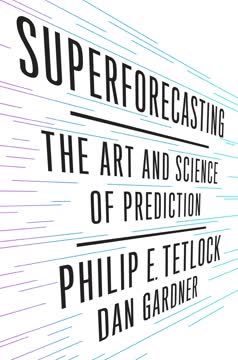

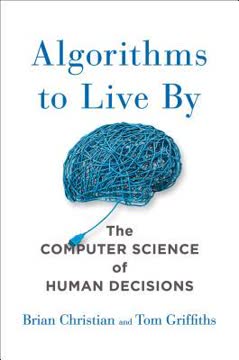
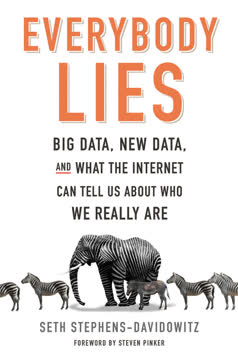

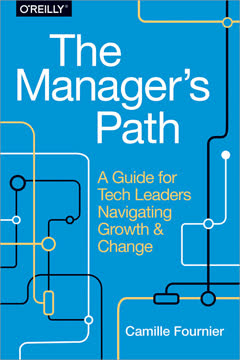
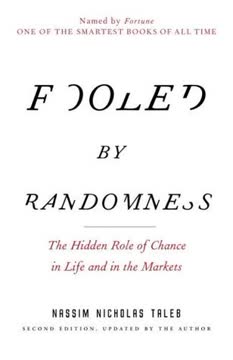

Download PDF
Download EPUB
.epub digital book format is ideal for reading ebooks on phones, tablets, and e-readers.




